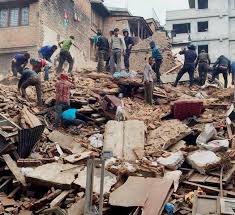A powerful earthquake struck Tibet early this morning, leaving a trail of destruction in its wake. The quake, measuring 7.0 on the Richter scale, caused significant loss of life and extensive damage to infrastructure. At least 53 people have been confirmed dead, and more than 60 others are reported to be injured, some critically. Emergency responders are scrambling to assist the victims as the scale of the disaster becomes clearer.
The earthquake hit the region at approximately 5:45 AM local time, catching many residents off guard. The epicenter was located in a rural part of Tibet’s western region, a place that is home to both small villages and remote settlements. Seismic activity of such intensity is not uncommon in the region, but this particular quake has proven to be particularly destructive.
Reports coming from the area suggest that the earthquake led to the collapse of many buildings, with several towns and villages suffering extensive structural damage. Traditional Tibetan homes, often made of stone and wood, were especially vulnerable to the tremors. Government officials and relief workers are working tirelessly to locate survivors who may still be trapped in the rubble. Local authorities have dispatched rescue teams, but access to some of the affected areas is limited due to damaged roads and landslides that have blocked routes.
In addition to the structural damage, the region has experienced widespread disruptions to utilities. Power lines have been downed, and telecommunication systems are currently offline in many parts of the affected area. This has made it difficult for officials to gather accurate and comprehensive data about the full extent of the destruction, particularly in more isolated villages. Authorities have called for reinforcements, including additional rescue teams, medical supplies, and heavy equipment to aid in the ongoing search and rescue operations.
The Chinese government has declared a state of emergency in the affected regions and is coordinating with local authorities and disaster relief agencies to provide assistance. Premier Li Keqiang has expressed his condolences to the families of the victims and has pledged to support recovery efforts. “We will do everything in our power to help the survivors and rebuild the affected areas,” he said in a public statement. The National Earthquake Bureau has also issued a warning for aftershocks in the coming days, urging residents to remain cautious.
As the rescue operations continue, medical teams are working around the clock to treat the injured. Many of the survivors have been taken to makeshift shelters set up in schools, sports halls, and public buildings, while efforts to provide food, water, and medical care are being ramped up. While the initial focus is on the rescue and treatment of the injured, officials are already beginning to assess the long-term needs of the affected communities, which include rebuilding infrastructure and providing psychological support for those who have lost loved ones.
The disaster has drawn expressions of sympathy and support from countries around the world. International aid organizations have pledged to provide assistance, including financial support, relief supplies, and expert teams to assist with search and rescue operations. Many Tibetans living abroad have also expressed their concern and solidarity, and various fundraisers have already been launched to support the victims.
As of now, the situation remains dire, and it is expected that the number of casualties could rise as more areas are reached. Rescue teams are working around the clock, hoping to find survivors trapped under the debris. With the coming days likely to bring more challenges due to aftershocks and the harsh winter conditions, the full extent of the damage is yet to be fully realized. However, the strength and resilience of the Tibetan people, alongside national and international efforts, offer hope in the face of this calamity.

